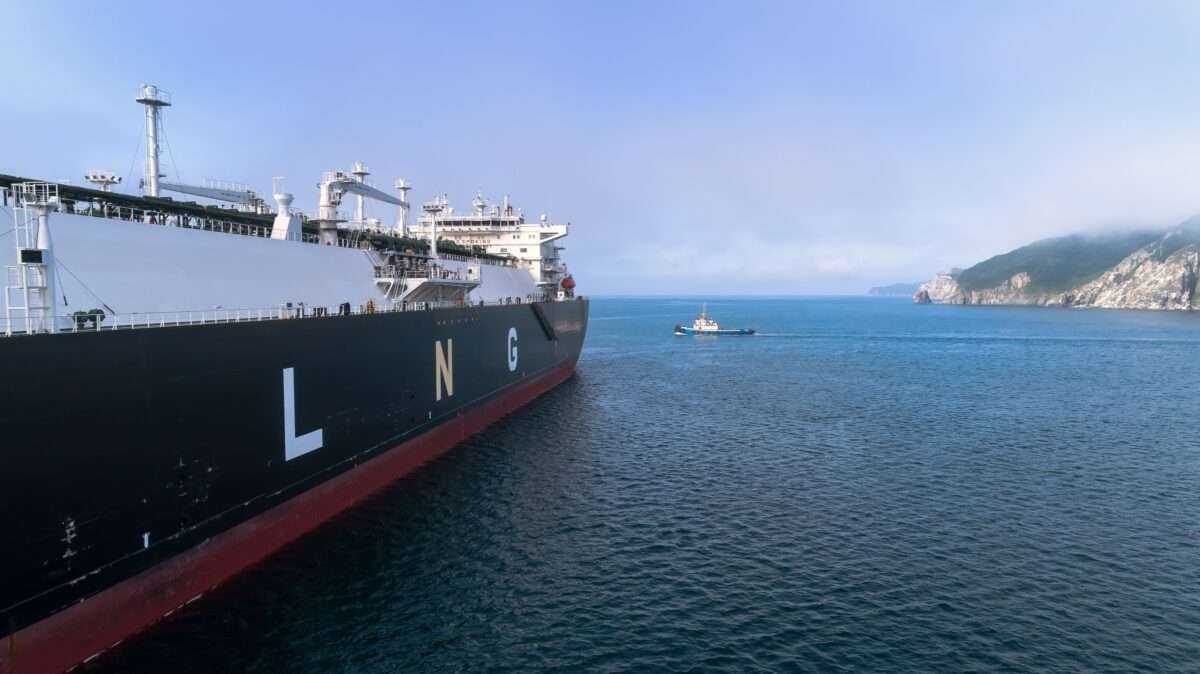
On Sept. 26, Pareto analyst Eirik Haavaldsen predicted that liquefied natural gas shipping rates could top $1 million per day in the fourth quarter. At least some deals are already halfway there, according to a report on Monday.
Paying a million a day may sound crazy. But it all comes down to the profit a shipper can make on a cargo. If a shipper can make $200 million in profits moving a single shipload of LNG, it will pay six figures a day in freight. Or if Pareto is right, seven.
New high for LNG shipping rates
It’s not even winter yet and short-term LNG shipping rates are already in record territory, not just for LNG shipping but for any commercial shipping sector ever. And these rates are expected to keep climbing.
Clarksons Securities put average voyage rates for the most efficient LNG carriers — those with two-stroke propulsion known as MEGI or XDF carriers — at $313,000 per day as of Monday. Benchmark tri-fuel, diesel engine (TFDE) carrier rates were assessed at $276,700 per day.
“LNG carriers are shooting for the stars. Spot earnings have reached dizzying heights,” Clarksons Securities analyst Frode Mørkedal wrote. “According to brokers, owners can now achieve three-way economics, which means they are compensated not just for a regular round voyage but also for positioning voyages. As a result, earnings on a round-trip basis might be around $500,000 a day.”
Even without the three-way economics, voyage charter rates are soaring.
S&P Global Commodity Insights told American Shipper that over the past week, the LNG carrier Yiannis was reportedly fixed to Shell at $400,000 per day for an intra-Atlantic Basin voyage and the Schneeweisschen was booked for early November at $360,000 per day by India’s GAIL.
War effect
Rates have gone into the $300,000s per day on occasion in the past two winters. But the current market situation is unprecedented. Gas supplier Russia is at war, it has shut off supplies to Germany, and someone just sabotaged two pipelines in the Baltic.
The number of LNG ships available for spot deals is exceptionally limited. As a result, the spot market is extremely thin. Almost all of the world’s LNG fleet is locked up on on long-term charters. In the past, more of those vessels may have been “relet” into the spot market to take advantage of skyrocketing rates. This time around, the profits from buying and selling the cargo itself is more attractive.
According to Mørkedal, “Brokers note that charterers and holding onto tonnage instead of subletting due to the exceptionally high cargo profits, which makes the optionality of having a vessel ready more lucrative than subletting the vessel in the spot market.”
Meanwhile, more ship capacity is getting tied up with floating storage. “From the beginning of October until the end of November, LNG cargo markets have a strong contango structure of $10 per million Btu,” Morkedal explained. “This is increasing interest in floating storage. A large number of laden LNG carriers are now reportedly waiting offshore of southern Europe as a result.”
The upper limits of spot rates
Extraordinarily high day rates have been seen in multiple bulk commodity shipping markets through the years.
Rates for very large crude carriers reached $200,000 per day in the fall 2019 and spring 2020. Rates for Capesize bulkers reportedly surpassed $200,000 per day in June 2008.
In container shipping, spot freight rates topped $30,000 per forty-foot equivalent unit last year. That’s around 30 times as high as rates during some years pre-COVID. It sparked an outcry among containerized cargo shippers, leading to accusations that rates were “unfair” and represented “price gouging.”
In bulk commodity shipping — which has far more experience with rate spikes caused by supply-demand imbalances — there is no such pushback. When the freight rate reaches the point where it erases the profit margin on the commodity cargo, the shipper simply refuses to book the trip.
Asked how high product tanker rates could theoretically go, Hafnia Tankers CEO Mikael Skov told attendees at the Capital Link New York Maritime Forum on Sept. 21, “Once you have full utilization, there’s nothing that prevents rates to go to any level, other than if freight becomes so much of the total that it kills it. There’s really no cap until the freight becomes really, really high.”
Scorpio Tankers (NYSE: STNG) President Robert Bugbee noted that his company fixed tankers on individual voyages this summer at over $100,000 per day “and not one time have we had phone calls from the heads of BP or Shell ringing up and saying, ‘What the hell are you doing screwing our guys over?’”
Click for more articles by Greg Miller
Related articles:
- LNG shipping rates top $100,000/day, oil tanker rates still rising
- Price of LNG goes stratospheric. Will LNG shipping rates follow?
- Biden-EU energy pact: LNG shipping game changer or wartime hype?
- Armada carrying US LNG heads to Europe, but it won’t be enough
- LNG shipping’s wild ride: Record, plunge, new record, new plunge
- First containers, then dry bulk, now LNG shipping rates are spiking
- New world record set for shipping rates: $350,000 per day

